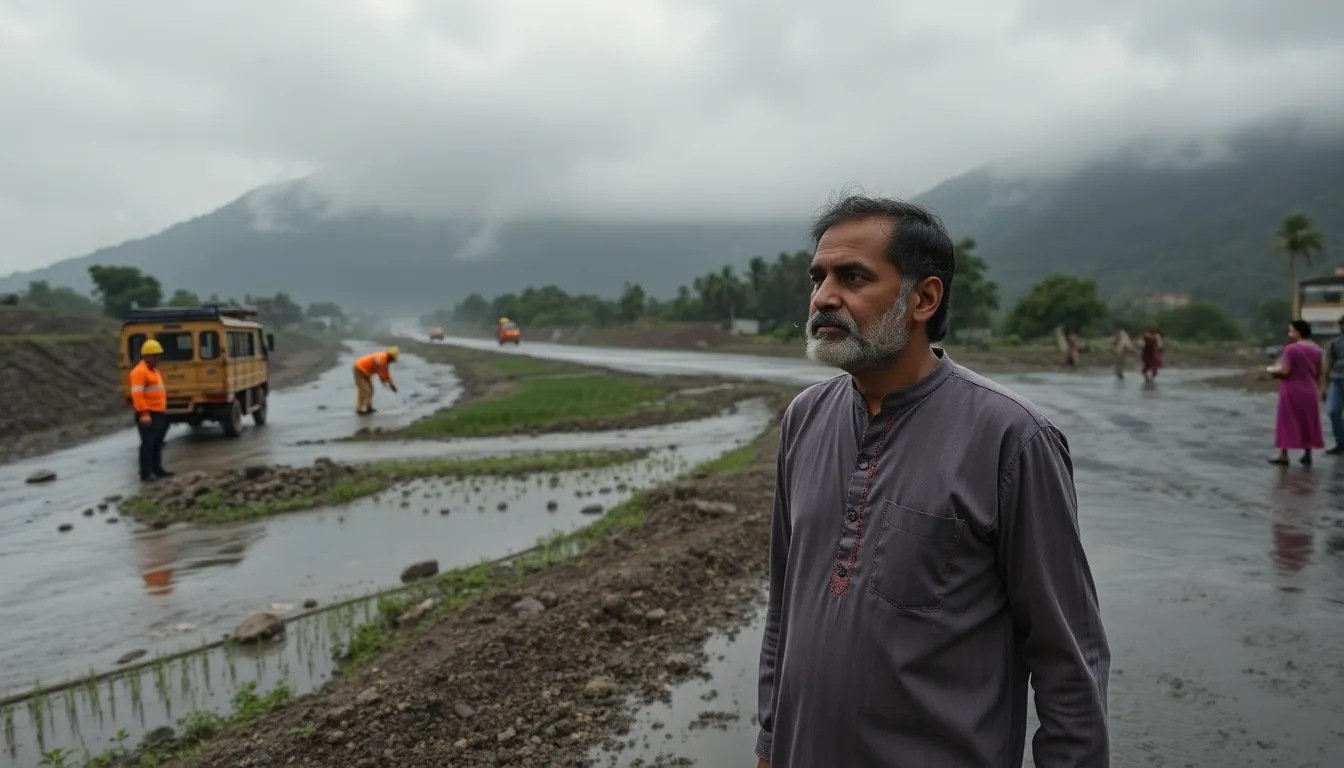North Gujarat has experienced heavy rainfall, leading to road closures in various areas. In the Banaskantha district, alerts were issued for low-lying regions due to excess water from upstream. The highways in the Danta region had to be closed because of landslides caused by the heavy rain. Stones fell onto the roads, making them impassable for vehicles. The Danta disaster response team quickly arrived at the scene to manage the situation.
As a result of the heavy rainfall, work to clear the roads began immediately. The landslides affected the Danta to Satlasana route, causing significant disruption to traffic. The Aravalli mountain range has also seen heavy rains, causing stones to slide onto the road. The state road and building department used machines to remove the stones, but one lane remained closed during the operation.
In addition to the road closures, the Siphu River in Dantiwada saw an increase in water levels due to the rains. This raised concerns for residents in low-lying areas, prompting local authorities to advise caution. The district administration urged people to stay alert as heavy rainfall continued. In Amirgarh, the rain created river-like scenes on the roads, and in Ikbalgarh, rainwater accumulated in people’s homes, causing damage to property.
As the weather department predicted more rain in the coming days, residents are advised to stay prepared. The rainfall has also affected agriculture, with concerns arising over potential crop damage. Many farmers in the region are worried about the impact of the unexpected rains on their crops. The recent weather changes have brought relief from the heat, but they also pose risks to the farming community.
The heavy rainfall has significantly impacted the region, with reports of damage in several districts. In Rajkot and Amreli, the weather has shifted, bringing thunderstorms and rain. Farmers in these areas are particularly worried about losing their crops, including mangoes and onions, which were left out in the open.
The weather department has officially declared the end of the southwest monsoon season in Gujarat. However, North Gujarat recorded 17% more rainfall this season compared to last year. In Mehsana, rainfall reached 133% of the average, while Banaskantha recorded about 99.90%. This year’s rainfall began in July and has led to flooding in many areas due to multiple weather systems activating simultaneously.
Despite the challenges, the heavy rains could benefit water reserves and underground water levels in the long term. Good rainfall this season means farmers may have enough irrigation water for the next two seasons. This year’s rainfall statistics suggest a positive outcome for agriculture, with the potential for improved crop yields in the future.
As North Gujarat continues to deal with the effects of heavy rain, residents are reminded to stay updated on weather alerts and take necessary precautions to ensure their safety. The local government is working diligently to restore normalcy while keeping the public informed about ongoing weather conditions.


Leave a Reply